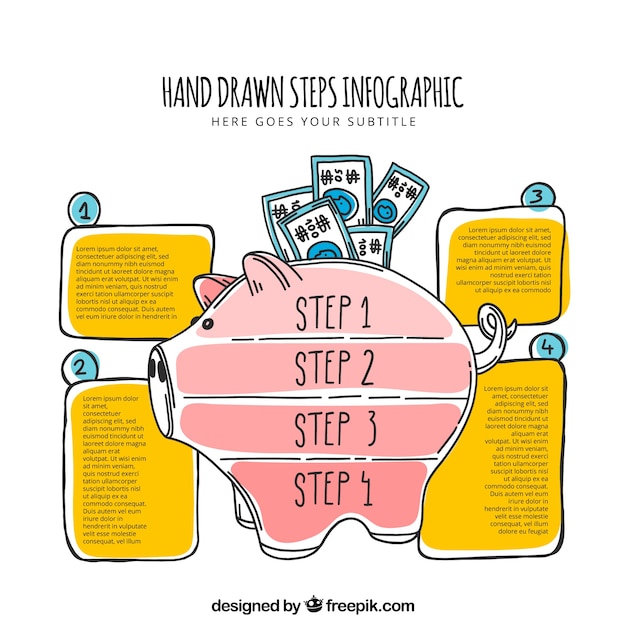Maximize Education Savings: A Guide to Tax-Advantaged Tuition Programs

Tax-advantaged education savings, particularly through Qualified Tuition Programs (QTPs) or 529 plans, offer a strategic way for US families to save for future education expenses while minimizing their tax burden and maximizing their investment growth.
Planning for education expenses can be a daunting task, but understanding the ins and outs of tax-advantaged education savings options can make a significant difference. Qualified Tuition Programs (QTPs), often known as 529 plans, are designed to help families save for future educational costs while enjoying valuable tax benefits, making them a great tool for minimizing your tax burden.
Understanding Tax-Advantaged Education Savings
Tax-advantaged education savings plans are financial tools designed to make saving for education more accessible and beneficial. These plans offer various tax incentives, such as tax-deferred growth or tax-free withdrawals, to help families accumulate funds for future educational expenses more efficiently. This section explores their core benefits.
What are Qualified Tuition Programs (529 Plans)?
A 529 plan, formally known as a Qualified Tuition Program (QTP), is a savings plan designed to encourage saving for future education costs. These are legally tax-advantaged, meaning offer benefits to reduce the amount of tax that must be paid.
Key Benefits of 529 Plans
529 plans offer several key benefits that make them a popular choice for families looking to save for education. Tax advantages, flexibility, and potential for substantial growth are among the most attractive features.
- Tax-Deferred Growth: Earnings in a 529 plan grow tax-deferred.
- Tax-Free Withdrawals: Withdrawals, when used for qualified education expenses, are federal income tax-free.
- State Tax Benefits: Many states offer additional tax benefits, such as state income tax deductions or credits for contributions.
- Flexibility: Funds can be used for a wide range of educational expenses, not just tuition.
In summary, tax-advantaged education savings plans, particularly 529 plans, offer a powerful way to save for future educational expenses while taking advantage of significant tax benefits. These plans provide tax-deferred growth, tax-free withdrawals for qualified expenses, and often, state tax incentives.
Types of 529 Plans: Savings vs. Prepaid Tuition
There are two main types of 529 plans: savings plans and prepaid tuition plans. Each type offers unique benefits and is designed to meet different savings goals, offering you the means to save in different ways.

529 Savings Plans
529 savings plans function similarly to investment accounts, allowing you to invest in a variety of options such as mutual funds, ETFs, or target-date funds. The value of the account fluctuates based on market performance.
Prepaid Tuition Plans
Prepaid tuition plans, on the other hand, allow you to purchase tuition credits at today’s prices for future use at eligible colleges and universities. These plans are designed to protect against tuition inflation.
Choosing between a 529 savings plan and a prepaid tuition plan depends on your individual circumstances and goals. Savings plans offer more flexibility and potential for higher returns, while prepaid tuition plans provide security against rising tuition costs. Evaluate your risk tolerance and timeline to make the best decision for your family.
Qualified Education Expenses: What’s Covered?
Understanding what constitutes a qualified education expense is crucial for maximizing the benefits of your 529 plan. Using funds for non-qualified expenses can result in taxes and penalties, so it’s vital to be well-informed.
Eligible Expenses
Qualified education expenses typically include tuition, fees, books, supplies, and equipment required for enrollment or attendance at an eligible educational institution. Some plans also cover room and board.
- Tuition and Fees: Covers the costs of courses and mandatory fees for enrollment.
- Books and Supplies: Includes textbooks, notebooks, and other necessary materials.
- Equipment: Covers computers, software, and other required equipment.
- Room and Board: If the beneficiary is enrolled at least half-time, housing and meal costs are often covered.
By ensuring that your 529 plan withdrawals are used for qualified education expenses, you can maximize the tax benefits and avoid unnecessary penalties. Always consult the specific terms of your plan and current IRS regulations to confirm eligibility.
Maximizing Tax Benefits with 529 Plans
One of the primary advantages of 529 plans is their ability to provide significant tax benefits, helping families save more effectively for education. Understanding how to leverage these benefits can make a substantial difference in your savings strategy.
Contribution Strategies
Strategic contributions can help you maximize the growth potential of your 529 plan. Consider front-loading contributions or setting up automatic monthly payments to take advantage of compounding returns.
State Tax Deductions and Credits
Many states offer additional tax incentives for contributing to a 529 plan, such as state income tax deductions or credits. These benefits can further reduce your tax burden and increase the overall value of your savings.

To maximize the tax benefits of your 529 plan, develop a comprehensive contribution strategy and take advantage of any available state tax deductions or credits. Consult with a financial advisor to tailor your approach to your specific financial situation and goals.
Navigating Potential Risks and Limitations
While 529 plans offer numerous benefits, it’s important to be aware of the potential risks and limitations associated with these savings vehicles. Understanding these factors can help you make informed decisions and avoid potential pitfalls.
Investment Risk
For 529 savings plans, investment risk is a key consideration. The value of your account can fluctuate based on market performance, and there is always the potential for loss. Be sure to choose investment options that align with your risk tolerance and timeline.
Impact on Financial Aid
Funds held in a 529 plan can impact a student’s eligibility for financial aid. While 529 plans are generally treated favorably, it’s important to understand how they are factored into financial aid calculations.
Being aware of the potential risks and limitations associated with 529 plans is crucial for effective planning. Carefully consider investment risk, understand the impact on financial aid, and review any potential penalties for non-qualified withdrawals to make the most informed decisions.
Setting Up and Managing Your 529 Plan
Setting up and managing a 529 plan involves several key steps, from choosing the right plan to monitoring its performance over time. A proactive approach ensures that your savings plan effectively supports your education goals.
Opening a 529 Account
Opening a 529 account is typically straightforward. You’ll need to provide basic information about yourself and the beneficiary, choose your investment options, and make an initial contribution.
Regular Monitoring and Adjustments
It’s important to regularly monitor the performance of your 529 plan and make adjustments as needed. This includes rebalancing your portfolio, reviewing your contribution strategy, and ensuring that your plan continues to align with your goals.
Effectively setting up and managing a 529 plan requires careful planning and ongoing attention. Choose the right plan, develop a contribution strategy, monitor your account’s performance, and seek professional advice to stay on track and achieve your education savings goals.
| Key Aspect | Brief Description |
|---|---|
| 💰 Tax Benefits | Tax-deferred growth and tax-free withdrawals for qualified education expenses. |
| 🏫 Plan Types | Savings plans (investment-based) and prepaid tuition plans (guaranteed tuition rates). |
| 📝 Eligible Expenses | Covers tuition, fees, books, supplies, and room & board at eligible institutions. |
| 📈 Contribution Strategies | Front-loading or automatic monthly contributions for maximum growth. |
Frequently Asked Questions
▼
A 529 plan is savings plan designed to encourage saving for future education expenses. These plans are legally tax-advantaged, meaning offer benefits to reduce the amount of tax that must be paid.
▼
There are two types of 529 plans: savings plans and prepaid tuition plans. Savings plans functions similarly to investment accounts, while prepaid tuition plans will allow you to purchase tuition credits today at a fixed rate.
▼
Qualified education expenses typically include tuition, fees, books, supplies, and equipment required for enrollment or attendance at an eligible educational institution. Some plans also cover room and board.
▼
Earnings in a 529 plan grow tax-deferred, and withdrawals, when used for qualified education expenses, are federal income tax-free. Many states offer additional tax benefits, such as state income tax deductions or credits for contributions.
▼
When using 529 savings plans, understand that these are investment-based, so the value of your account can fluctuate based on market performance, and there is always the potential for loss. Understand the risk tolerances of the plans you’re investing in.
Conclusion
Navigating the world of education savings can be complex, but 529 plans offer a valuable tool for families looking to secure their children’s future. By understanding the benefits, types, and strategies associated with these plans, you can make informed decisions and maximize your savings potential. Consider consulting with a financial advisor to tailor a 529 plan to your specific needs and goals, ensuring a brighter and more financially secure future for your loved ones.





